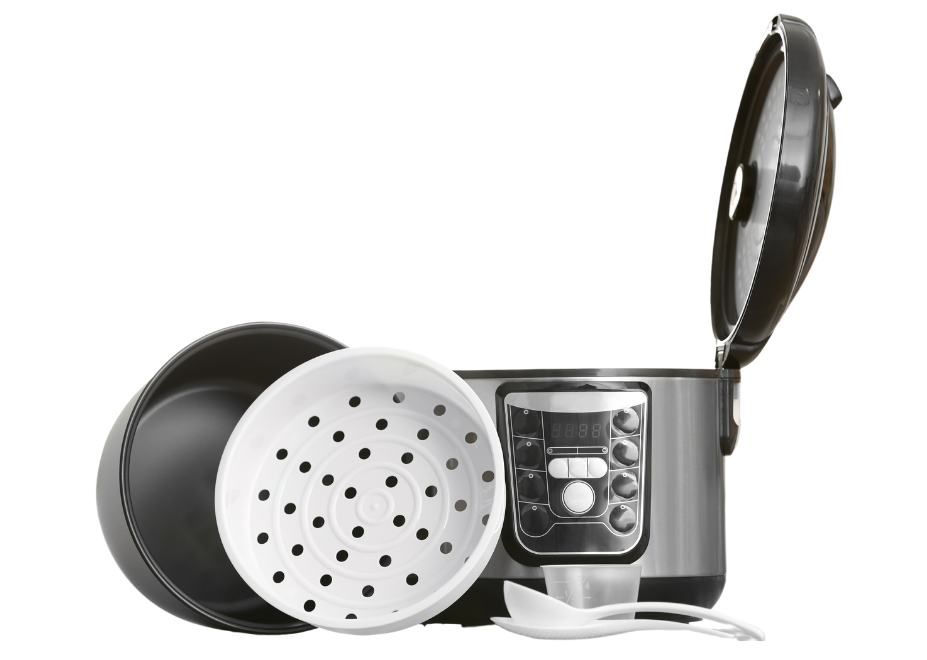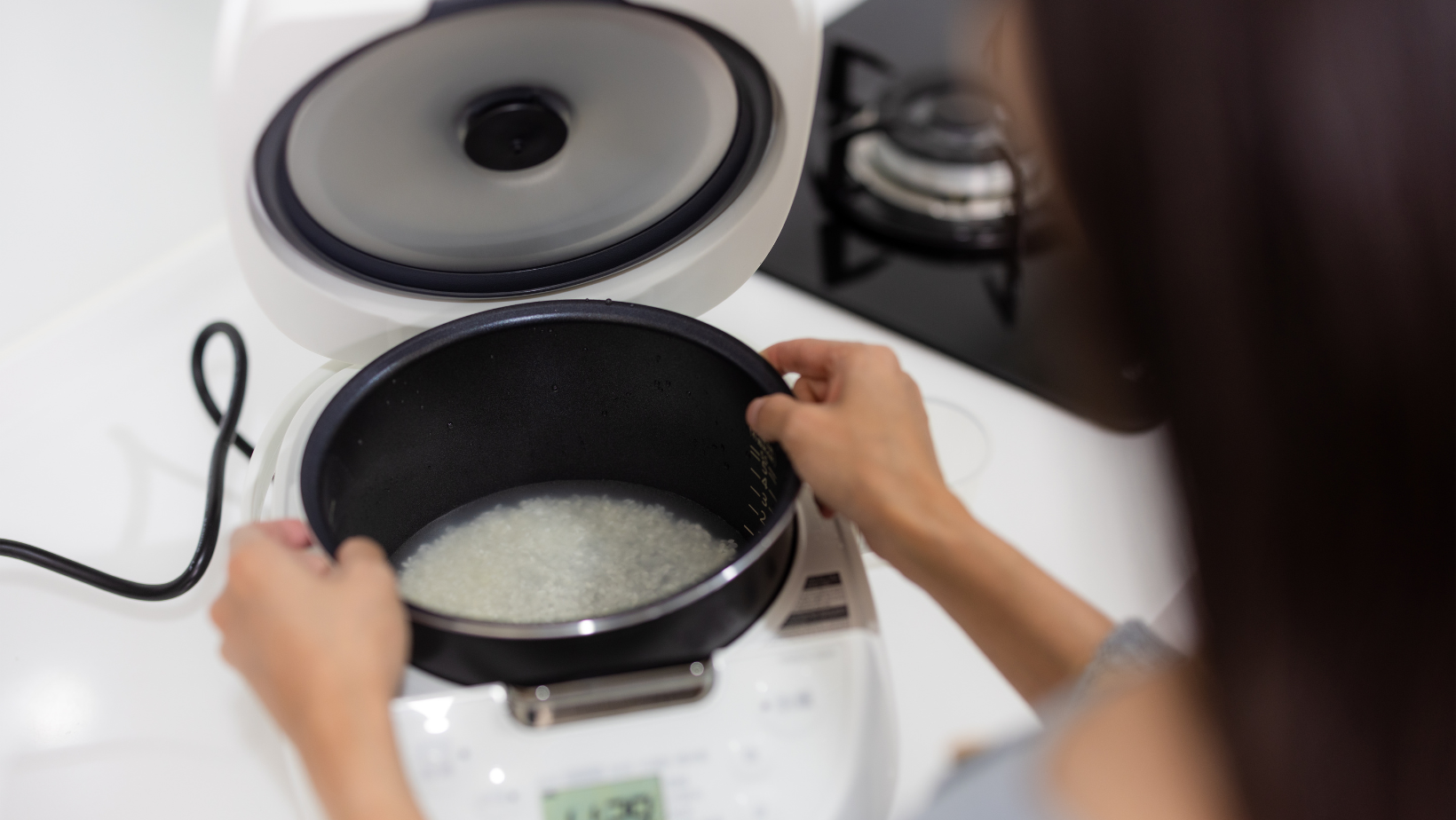Imagine this: you’re strolling through the rice aisle at the grocery store, admiring the various options and feeling a sense of culinary excitement. You confidently select a bag of rice and make your way to the checkout. But as you’re about to leave, it hits you—your rice cooker is on the fritz. Nightmare fuel, right? Well, fear not! We’ve got some maintenance and repair tips for your trusty rice cooker.
Rice Cooker Maintenance
Taking good care of your rice cooker is key to ensuring it lasts for many delicious rice dishes to come. Here are some tips on how to maintain it.
Cleaning The Inside

Inner Bowl
The inner bowl of your rice cooker is the most important part to keep clean. Make sure the cooker is unplugged and cooled down before you start cleaning. If your rice cooker doesn’t have a removable bowl, it might be best to stay away from it altogether.
To clean the inner bowl, remove the bowl from the machine and soak it in warm water for around 20 minutes. This should ensure the easy removal of any grains of rice stuck to the bowl.
Drain out the water from the bowl and then proceed to clean it with a nonabrasive sponge using warm soapy water. Don’t use any rough cleaning accessories to preserve the bowl and keep it scratch-free.
Lid
Other parts of a rice cooker usually include the lid, and the steam cap. However, before removing anything from the machine, read the instruction manual carefully. The manual should outline the best methods to clean the removable parts and let you know if they’re dishwasher safe.
Again, use warm soapy water and a nonabrasive sponge to clean all the remaining parts of the cooker and use a clean, soft cloth to wipe once cleaned.
Once you’ve cleaned all the removable parts, dry them off so no water leaks into the machine and damages the heating plate or inner circuit.
At times the inner bowl might contain water stains from regular use. Use a 1:1 mixture of water and vinegar to wipe the walls and insides of the bowl and that should get rid of all such stains.
Some rice cookers out there might not have visibly detachable lids. Watch this video to make sure that you successfully remove any and all removable parts when on the mission to clean this family heritage inside out.
@connorscooking seriously, if you didn’t know, go do it. #foodtok #cleaning #ricecooker #rice #learnedontiktok
Note: If the manual mentions that the rice cooker is dishwasher safe, it does not imply that the entire machine can go into the dishwasher. It is only talking about the removable parts.
Cleaning the Mechanical Parts
The heating pad of your rice cooker is the most important mechanical component to keep clean. Ignoring internal care for the rice cooker is an ideal way to make the rice cooker fit for a trip to the recycling depot. An attempt to clean the insides of the rice cooker should only be made after ensuring that the device is unplugged and completely cooled down.
The ideal method of cleaning the inside of a rice cooker is to use a soft and damp cloth to wipe the insides. It is important that you don’t use any harmful chemicals when cleaning inside the rice cooker as it might contaminate your food later. Make sure that the rice cooker is completely dried out on the inside before using it again.
When cleaning the inside of the rice cooker, be mindful of not scratching the heating pad, as this could shorten the lifespan of the appliance.
Cleaning the outside of the Rice Cooker
Use a damp cloth or even surface cleaners to get rid of any stains on the outside of the rice cooker after use. If using surface cleaner, spray some of it onto a cloth and use the cloth to wipe the machine rather than directly spraying on the machine. A direct spray might cause chemicals to enter the inside of the machine and lead to contamination of your otherwise perfect rice.
Proper Storage
When you’re not using your rice cooker, it’s important to store it correctly. Make sure its completely dry before putting it away to prevent any moisture buildup. Store it in a cool, dry place where it won’t get damaged. Remember, your rice cooker deserves a luxurious spot!
Basic Rice Cooker Repairs
Sometimes, even with proper maintenance, your rice cooker may need some basic repairs and TLC (Tender Loving Care). This following illustration should help understand when your rice cooker needs to be repaired or replaced:
Here are a few trouble-shooting tips:
- If your rice cooker doesn’t turn on, check the power cord and make sure it is securely plugged in. If the cord is damaged, it may require replacement.
- If your rice cooker is not cooking the rice evenly, make sure the heating pad is clean and free of any residue. Uneven cooking may also be a sign that the heating pad is wearing out and needs to be replaced.
- If your rice cooker is making strange noises or emitting odd smells, it could be an indication of a more serious problem. In this case, it’s best to consult a professional or contact the manufacturer for assistance.
Remember, safety first! Always unplug your rice cooker before attempting any repairs.
Need in-person help for your repair?
Check with a local repair shop or for an upcoming Repair Cafe happening in your community. Repair Cafes are community gatherings where visitors can get their broken household items fixed, free of charge, with the help of volunteer fixing experts. Some Repair Cafes even have 3D printers to print small plastic parts that need fixing like an on/off button!
Beyond Repair? Recycle it!
Lastly, despite careful maintenance and repair efforts, if your rice cooker stops working for good we can recycle it! ElectroRecycle accepts many types of countertop kitchen appliance for recycling at over 230 collection sites across British Columbia! Find a free recycling location near you on our Collection Locator page.




Comments